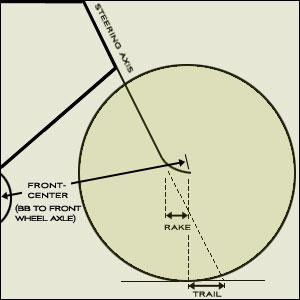
At about 51cm or 52cm you enter a size range where just about everybody's bikes are built with 700c wheels. But we're still talking about small bikes. Here, there's a convergence of geometry. This, because there's only so many ways you can design a 700c bike in a small size. You're constrained by practical limits: front/center (because of shoe overlap); head tube height (you can only make a head tube so short); wheel size (700c wheels are the size they are); and so forth.
Accordingly, what we see in the smaller sizes is a grouping of bikes around what we might conclude is a consensus geometry. Seven of the 10 tri bikes randomly chosen for this analysis sit inside a fairly small box. That box has as its center 41cm of reach and just a tick over 49cm of stack. All these bikes are within 7mm one way or the other of 41cm of reach, and within 10mm one way or the other of 49.1cm of stack.
At the center of this box is the Kuota Kueen K and the Ceepo Venom. Not far from the center are the Airfoil Pro, all the Cervelos, the Wilier Cento Crono, the Ridley Dean, and all the Felts. Were I to chart more tri bike models, most would fit inside this box.
Outside the box is the Cannondale Slice in size 51cm, and it's a whopping 4cm narrower than the center of this box. This isn't a bad geometry, it's just an outlier geometry. For that shallower rider, or, a short rider that's very leggy, the Slice might be the perfect fit. But it's certainly outside the consensus. The Specialized Transition and the Orbea Ordu likewise sit outside the box.
This consensus, alas, is not scalable. Bike designers are free of the constraints placed upon them in the smaller sizes. Sometimes that's a good thing, sometimes not. By the time these bikes reach 58cm in size, geometries diverge, with bikes falling roughly into one of two geometric camps.
The take-away is that customers looking for bikes that fit a geometric theme have more to choose from when the bikes are small, assuming the geometric theme fits this consensus.
That established, these bikes do vary widely in handling characteristics. As noted in a recent article on bicycle trail, while it's fairly easy to find a bike that fits well in the 51cm/52cm range, these bikes are subject to a wide divergence in steering geometry. This is because these bikes tend to be made with shallower head angles than their larger cousins, yet when that's done the designers often put the same forks on these bikes that go on the larger sizes. Accordingly, the trail on these smaller bikes is often between 65mm and 70mm, and that makes for a very sluggish handler.
So, pardon the pun, but, you may wish to steer clear of the models with these very high trail numbers, at least until and unless you can test ride them and verify that the handling is to your liking.


